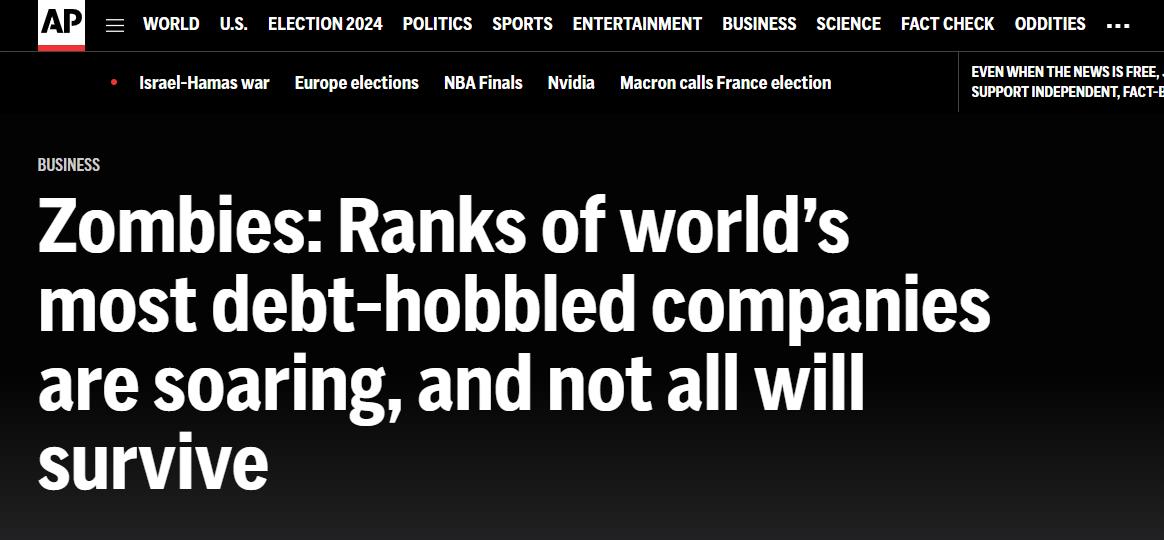
An Associated Press analysis found that the number of publicly-traded “zombie” companies—those burdened with debt and struggling to pay even the interest on their loans—has surged to nearly 7,000 worldwide, including 2,000 in the United States. These companies employ at least 130 million people across a dozen countries. The rise in cheap debt accumulation followed by stubborn inflation has pushed borrowing costs to decade highs. The situation underscores the challenges faced by many businesses in managing their debt obligations.
- Definition of Zombie Companies:
- Zombie companies are firms that are heavily indebted and struggle to generate enough revenue to cover their interest payments on loans.
- Despite their financial distress, they continue to operate, often relying on additional borrowing to stay afloat.
- Global Impact:
- According to the Associated Press analysis, there are nearly 7,000 publicly-traded zombie companies worldwide.
- These companies employ at least 130 million people across various countries.
- The situation is particularly pronounced in the United States, where around 2,000 such companies exist.
- Causes:
- Several factors contribute to the rise of zombie companies:
- Low Interest Rates: Cheap borrowing costs encourage companies to take on debt.
- Lax Lending Standards: Easier access to credit allows struggling firms to accumulate debt.
- Stubborn Inflation: Persistent inflation erodes the real value of debt, making it harder to repay.
- Several factors contribute to the rise of zombie companies:
- Challenges:
- Zombie companies pose challenges to the economy:
- Productivity Drag: These firms divert resources from more productive uses.
- Job Market Impact: While they employ millions, their long-term viability is uncertain.
- Risk to Financial Stability: A sudden wave of defaults could strain financial systems.
- Zombie companies pose challenges to the economy:
- Comparison to Dot Com Bubble:
- The current proportion of unprofitable small-cap companies (42%) surpasses the level during the Dot Com Bubble (41%).
- However, the underlying dynamics are different, with debt playing a more significant role today.
42% of small caps are unprofitable, higher than the 41% during the Dot Com Bubble 👀 t.co/TsStoLQCFK pic.twitter.com/GgtGk0IpEX
— Barchart (@Barchart) June 10, 2024
Views: 214